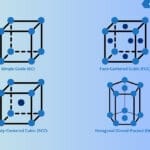Remote sensing is the science (and to some extent, art) of acquiring information about the Earth’s surface without actually being in contact with it. This is done by sensing and recording reflected or emitted energy (from distant objects or materials, by which they may be identified and categorized by class/type, substance, and spatial distribution of earth features) and processing, analyzing, and applying that information.“This process involves the detection and measurement of radiation of different wavelengths reflected or emitted”.
Stages in remote sensing
In much of remote sensing, the process involves an interaction between incident radiation and the targets of interest. This is exemplified by the use of imaging systems where the following seven elements are involved.
i. Energy Source or Illumination – the first requirement for remote sensing is to have an energy source which illuminates or provides electromagnetic energy to the target of interest.
ii. Radiation and the Atmosphere – as the energy travels from its source to the target, it will come in contact with and interact with the atmosphere it passes through. This interaction may take place a second time as the energy travels from the target to the sensor.
iii. Interaction with the Target – once the energy makes its way to the target through the atmosphere, it interacts with the target depending on the properties of both the target and the radiation.
iv. Recording of Energy by the Sensor – after the energy has been scattered by, or emitted from the target, we require a sensor (remote – not in contact with the target) to collect and record the electromagnetic radiation.
v. Transmission, Reception, and Processing – the energy recorded by the sensor has to be transmitted, often in electronic form, to a receiving and processing station where the data are processed into an image (hardcopy and/or digital).
vi. Interpretation and Analysis – the processed image is interpreted, visually and/or digitally or electronically, to extract information about the target which was illuminated.
vii. Application – the final element of the remote sensing process is achieved when we apply the information we have been able to extract from the imagery about the target in order to better understand it, reveal some new information, or assist in solving a particular problem.
Agriculture
– Commodities Forecasting, Global
Food Security, Infrastructure
Studies
Environment
– Impact Assessments, Baseline
Studies, Regulatory Compliance
Forestry
– Natural Resource Management,
Fuel Loading Studies, Fire
Fighting Management
Transportation
– Network Vulnerability
Assessments, Sea Lane
Monitoring, Site Planning and
Development
Utilities
– Corridor Planning and Monitoring,
Right- of- Way Management
Insurance
– Crop Damage Assessments, Property
Loss, Risk Assessments
Legal
– Litigation Support, Expert Witness
National and Global Security
– Relief Operations, Treaty/ Sanctions
Monitoring, Regional Conflicts
Emergency Response
– Damage Assessments, Accessibility
Studies, Contingency Planning
Telecommunications
– Cell Siting Studies, Network
Assessments














